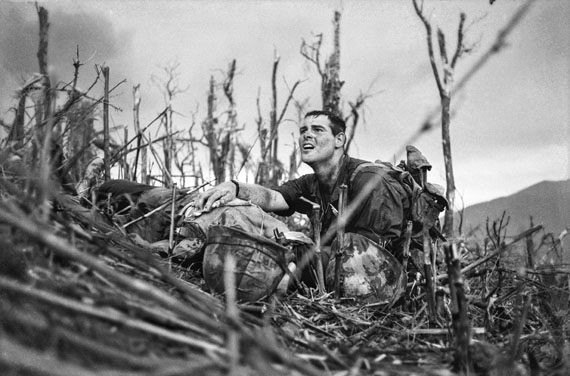
US Navy Corpsman Vernon Wike with dying US Marine, Battle of Hill 881, near Khe Sanh, South Vietnam, April–May 1967
Inkjet print on baryte paper
40 x 50 cm
© Dotation Catherine Leroy
Women War Photographers / Fotografinnen an der Front
Von Lee Miller bis Anja Niedringhaus
Carolyn Cole » Françoise Demulder » Catherine Leroy » Susan Meiselas » Lee Miller » Anja Niedringhaus » Christine Spengler » Gerda Taro »
Exhibition: 8 Mar – 10 Jun 2019
Thu 7 Mar 20:00

Kunstpalast
Ehrenhof 4-5
40479 Düsseldorf
+49 (0)211-566 42 100
info@kunstpalast.de
www.kunstpalast.de
Tue-Sun 11-18 . Thu 11-21
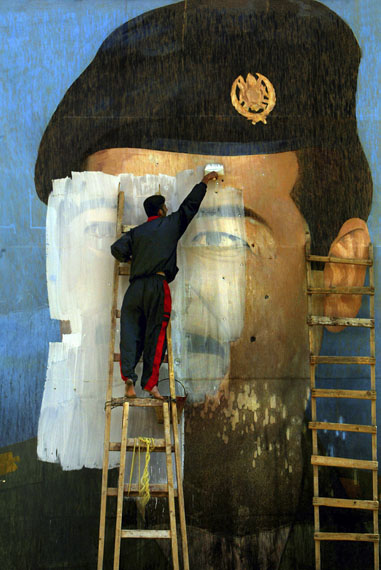
An image of Saddam Hussein, riddled with bullet holes, is painted over soon after
U.S. troops arrived in Baghdad and took control. Iraq, April 2003
pigment print on baryte paper
45,4 x 30,2 cm
© Carolyn Cole, Los Angeles
"Women War Photographers"
From Lee Miller to Anja Niedringhaus
Exhibition: 8 March – 10 June, 2019
The exhibition "Women War Photographers" turns to the generally underrated contribution women have made to war photography. The presentation comprises approximately 140 photographs by Carolyn Cole (*1961), Françoise Demulder (1947–2008), Catherine Leroy (1944–2006), Susan Meiselas (*1948), Lee Miller (1907–1977), Anja Niedringhaus (1965–2014), Christine Spengler (*1945) and Gerda Taro (1910–1937). Taken between 1936 and 2011, the photographs document the long history of women photographers working in war zones and question the
widely held notion that war photography is a male preserve.
"Women’s important contribution to war photography has not received adequate recognition", emphasizes Felix Krämer, Director General of the Kunstpalast. "The presentation demonstrates that in war reporting, like in all other areas of photography, pictures of timeless relevance have been created. They not only provide inspiration for diverse discourse, but also deserve the appropriate recognition from museums." The selected works illustrate that women photojournalists made use of various visual strategies and narrative forms. "We are showing eight female photographers with eight different perspectives on the war", explains Felicity Korn, one of the two curators. "Each of them represents her own style. Their respective approaches switch
from neutral objectivity to raw directness or sympathetic engagement and empathy." What all works have in common is that they were created for the fast-moving news machinery. Each of the presented photographers published her pictures in important newspapers and magazines. The impact and significance of their photographs goes far beyond what is depicted. "Exhibitions like this one are needed to extract these great photographs from the flood of pictures in the media", explains Anne-Marie Beckmann, co-curator of the exhibition. "Presenting them in a museum offers an opportunity to observe both their content and their artistic power in a different context, and to allow them to affect us."
In many cases, women photographers were in the thick of the fighting, taking pictures of wartime atrocities, pictures of the wounded and dead that do not spare the viewer. As opposed to their male counterparts, they often gained access to families, not being perceived as war participants. The exhibition is laid out chronologically and comprises eight monographic chapters. The selected photographs range from images from the European conflicts of the 1930s and 1940s to recent wars around the globe. When compiling the exhibition, the intention was to represent the most important photographic positions, while also illuminating
a diversity of war zones from the past 80 years.
The exhibition at the Kunstpalast shows images full of sensitivity, strength and humanity, all
created under extremely adverse conditions, which are valid far beyond their status as news
supplements. With their feel for composition and the right angle, the photographers have
not only succeeded in concentrating on the essence. Their pictures, despite the harrowing
themes, also make the eye linger.#�
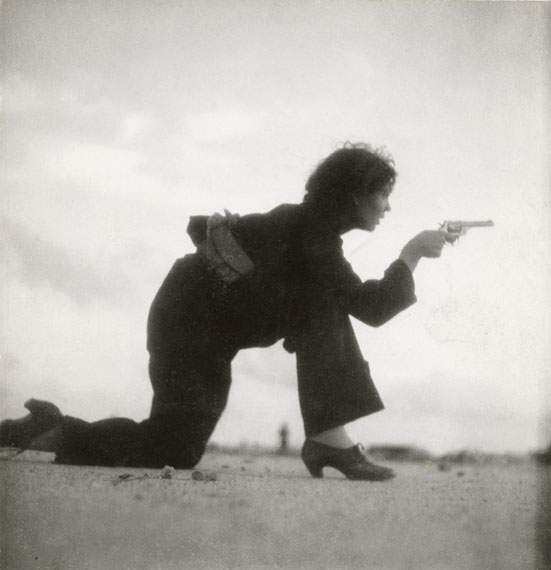
Inkjet print
Republican militiawoman training on the beach outside Barcelona, Spain, August 1936
18,4 x 17,8 cm
© International Center of Photography, New York
"Fotografinnen an der Front"
Von Lee Miller bis Anja Niedringhaus
Ausstellung: 8. März bis 10. Juni 2019
Die Ausstellung "Fotografinnen an der Front" widmet sich dem bislang wenig beachteten Beitrag von Frauen zur Kriegsfotografie. Gezeigt werden circa 140 Fotografien von Carolyn Cole (*1961), Françoise Demulder (1947–2008), Catherine Leroy (1944–2006), Susan Meiselas (*1948), Lee Miller (1907–1977), Anja Niedringhaus (1965–2014), Christine Spengler (*1945) und Gerda Taro (1910–1937). Die in den Jahren 1936 bis 2011 entstandenen Aufnahmen dokumentieren die lange Tradition von in Krisengebieten tätigen Fotografinnen und stellen die weitläufige Vorstellung infrage, die Kriegsfotografie sei ein von Männern dominiertes Berufsfeld.
"Der wesentliche Beitrag von Frauen zur Kriegsfotografie ist bisher nicht ausreichend gewürdigt worden", betont Felix Krämer. "Die Ausstellung im Kunstpalast zeigt, dass in der Kriegsberichterstattung, wie in allen anderen Sparten der Fotografie, Bilder von zeitloser Relevanz entstanden sind. Sie liefern nicht nur wichtige Anregungen für vielfältige Diskurse, sondern ihnen gebührt auch eine angemessene museale Anerkennung." Anhand der ausgewählten Arbeiten wird deutlich, dass sich Fotojournalistinnen verschiedenster Bildstrategien und Erzählformen bedienen. "Wir zeigen acht Fotografinnen mit acht unterschiedlichen
Perspektiven auf den Krieg", erläutert Felicity Korn, eine der beiden Kuratorinnen. "Jede von
ihnen steht für ihren eigenen Stil. Die jeweiligen Herangehensweisen changieren zwischen der Wahrung sachlicher Distanz, unmittelbarer Direktheit und persönlicher Anteilnahme."
Gemeinam ist allen Werken, dass sie vorrangig für die schnelllebige Nachrichtenwelt geschaffen wurden. Jede der präsentierten Fotografinnen publizierte ihre Bilder in wichtigen Zeitungen und Magazinen. Die Wirkung und Bedeutung der Aufnahmen geht weit über das hinaus, was sie abbilden. "Es braucht Ausstellungen wie diese, um die großartigen Fotografien aus der Bilderflut der Medienlandschaft herauszufiltern", erklärt Anne-Marie Beckmann, ebenfalls Kuratorin der Ausstellung. "Die Präsentation in einem Kunstmuseum bietet die Möglichkeit, sowohl die inhaltliche Dimension als auch die künstlerische Kraft der Aufnahmen hervorzuheben und auf sich wirken zu lassen."
Vielerorts waren die Fotografinnen an vorderster Front im Einsatz und machten Aufnahmen von Kriegsgräueln, von Verwundeten und Leichen, die den Betrachter nicht schonen. Im Gegensatz zu ihren männlichen Kollegen erhielten sie häufiger Zugang zu Familien und Betroffenen, da sie nicht als Kriegsteilnehmer wahrgenommen wurden. Gegliedert ist die chronologsch aufgebaute Ausstellung in acht monographische Kapitel. Die Auswahl berücksichtigt Arbeiten von den europäischen Konflikten der 1930er- und 1940er-Jahre bis zu den
jüngsten internationalen Kriegsgeschehen. Bei der Zusammenstellung wurde darauf geachtet, dass die wichtigsten fotografischen Positionen vertreten sind und zugleich sehr unterschiedliche Kriegsgebiete aus den letzten 80 Jahren beleuchtet werden.
Die Werkschau im Kunstpalast zeigt Bilder voller Sensibilität, Kraft und Menschlichkeit, die allesamt unter den widrigen Bedingungen des Krieges geschaffen wurden und deren Gültigkeit weit über die Begleitung von Nachrichten hinausreicht. Mit ihrem Gespür für Komposition und Perspektive ist es den Fotografinnen nicht nur gelungen, sich auf das Wesentliche zu konzentrieren, sondern auch, dass das Auge trotz der erschütternden Thematik auf ihren Aufnahmen verweilt.
Die Ausstellung wird gefördert von der Kulturstiftung des Bundes und der Rudolf Augstein Stiftung.
�
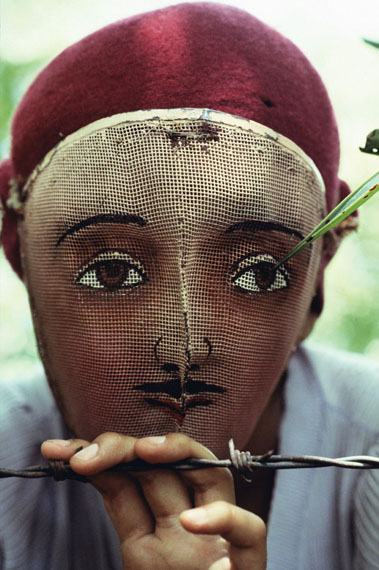
Traditional Indian dance mask from the town of Monimbo, adopted by the rebels
during the fight against Somoza to conceal identity, Nicaragua, 1978
Inkjet print, 70 x 50 cm
© Susan Meiselas/Magnum Photos
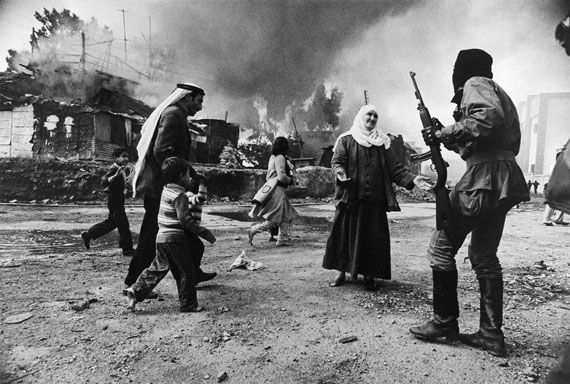
Massacre at Quarantaine, Beirut, Lebanon, 1976
pigment print on baryte paper, 29,7 x 42 cm
© Succession Françoise Demulder/Roger-Viollet
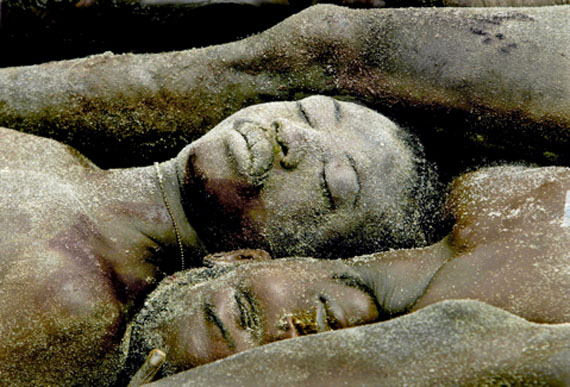
Dozens of bodies are placed in a mass grave on the outskirts of Monrovia, Liberia, August 2003
pigment print on baryte paper
30,2 x 45,4 cm
© Carolyn Cole, Los Angeles
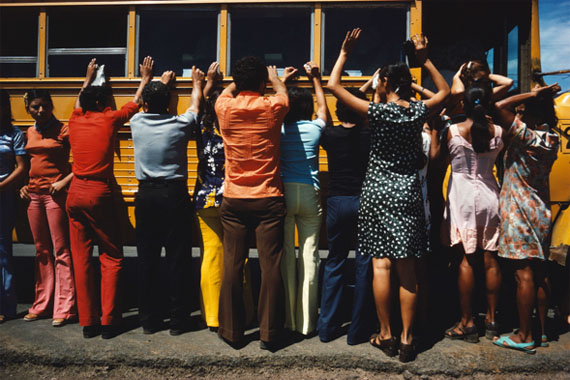
Searching all travellers, Ciudad Sandino, Nicaragua, 1978
Inkjet print, 50 x 70 cm
© Susan Meiselas/Magnum Photos
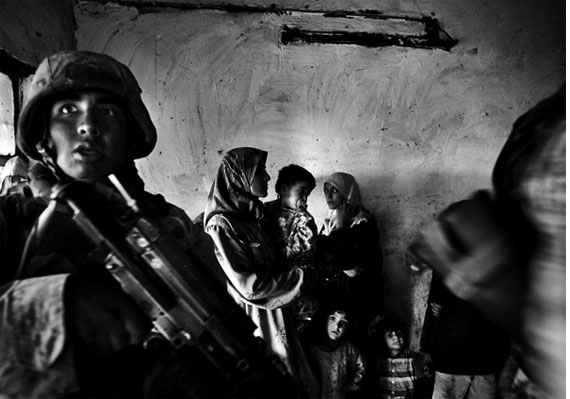
US Marines raid the house of an Iraqi delegate in the Abu Ghraib district, Baghdad, Iraq, November 2004
pigment print on baryte paper
29,7 x 42 cm
Kunstpalast © picture alliance/AP Images
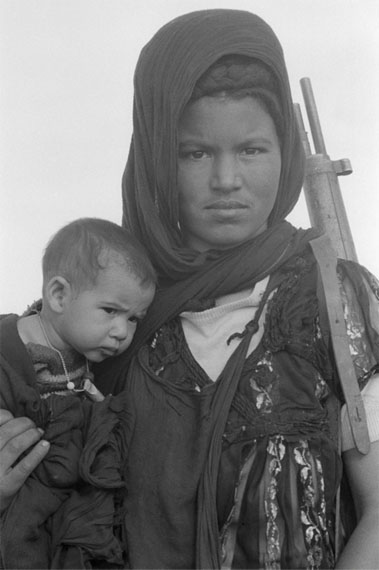
Nouenna, fighter of the Polisario Front, The Western Sahara, 1976
Gelatin silver print
50 x 60 cm
© Christine Spengler, Paris